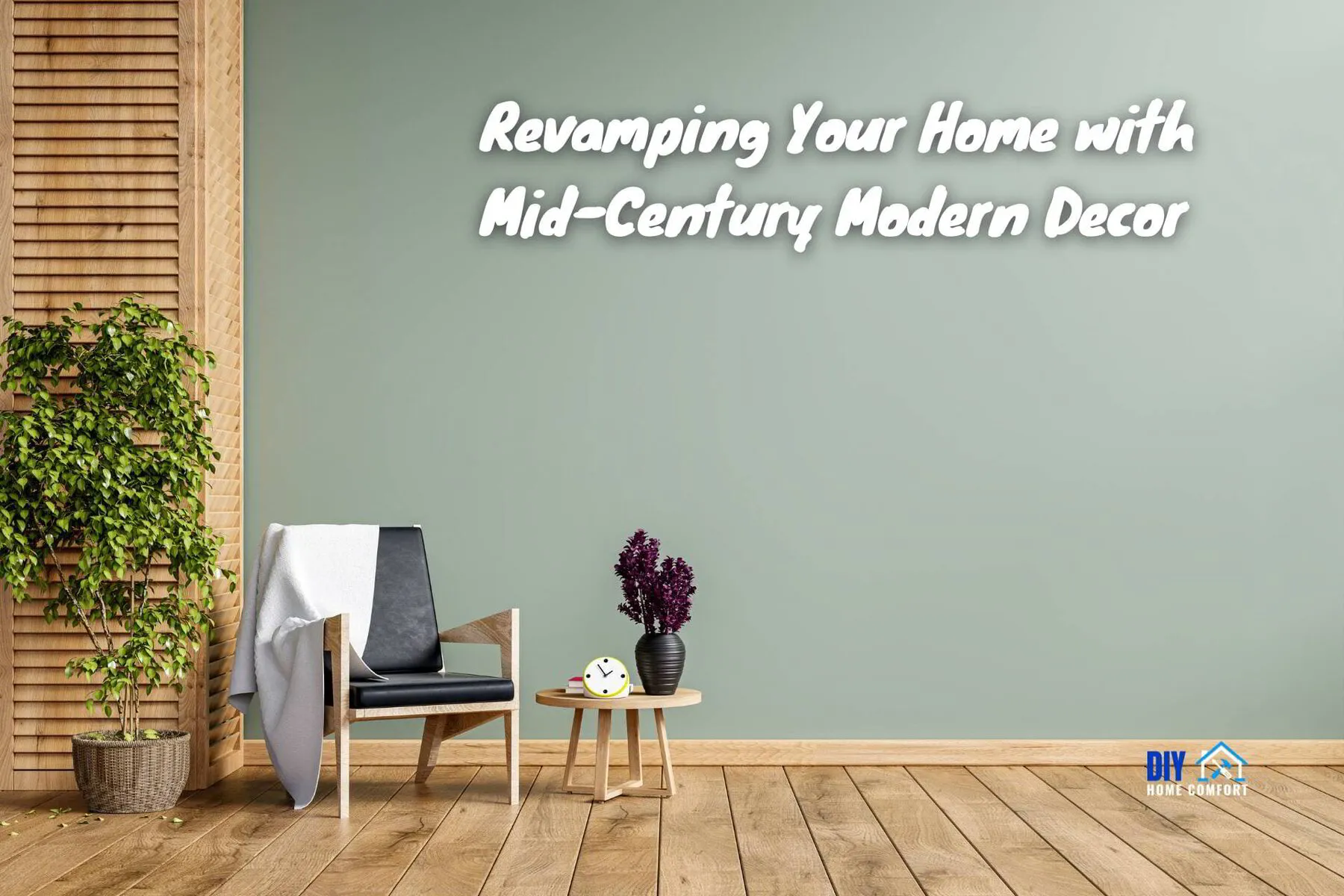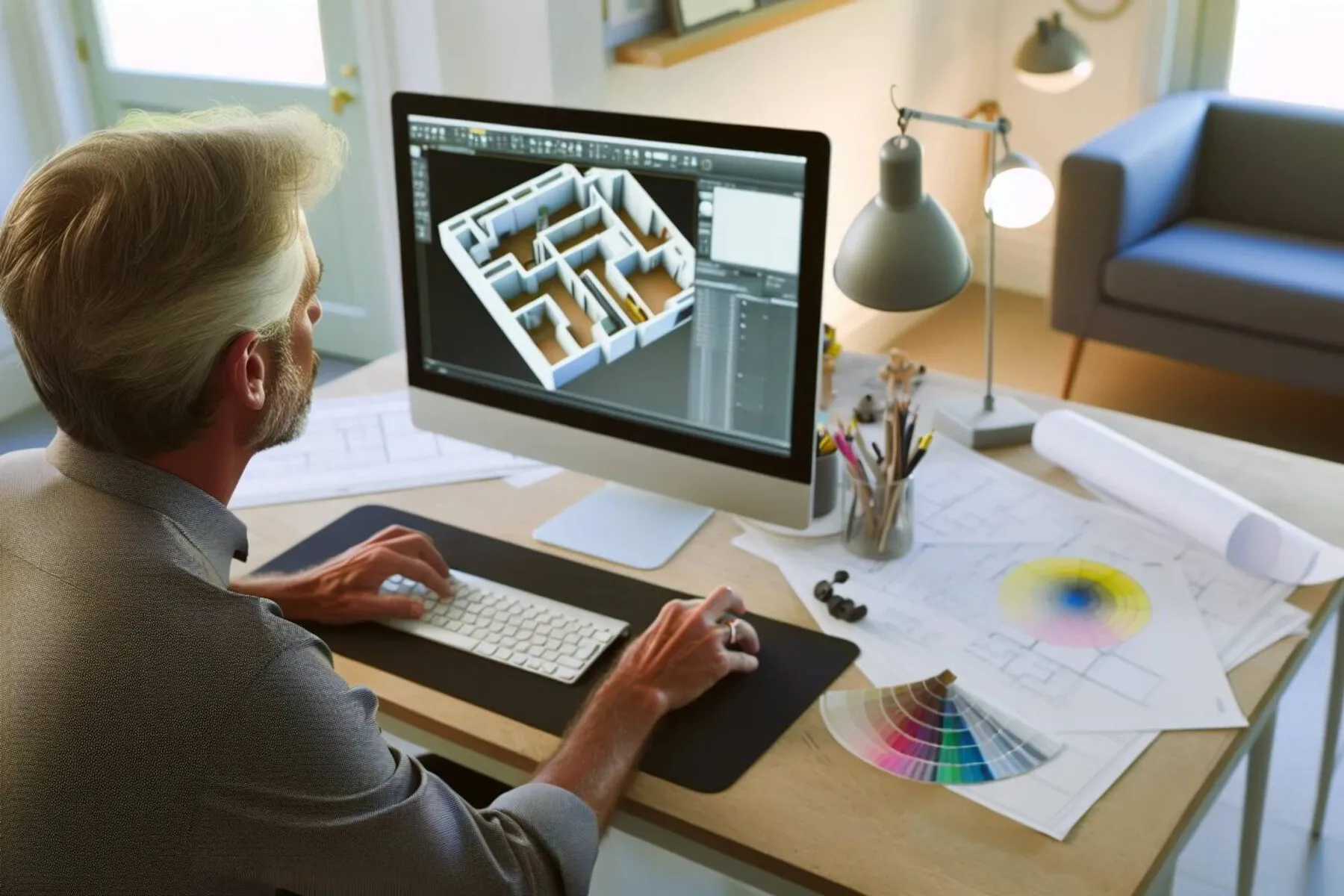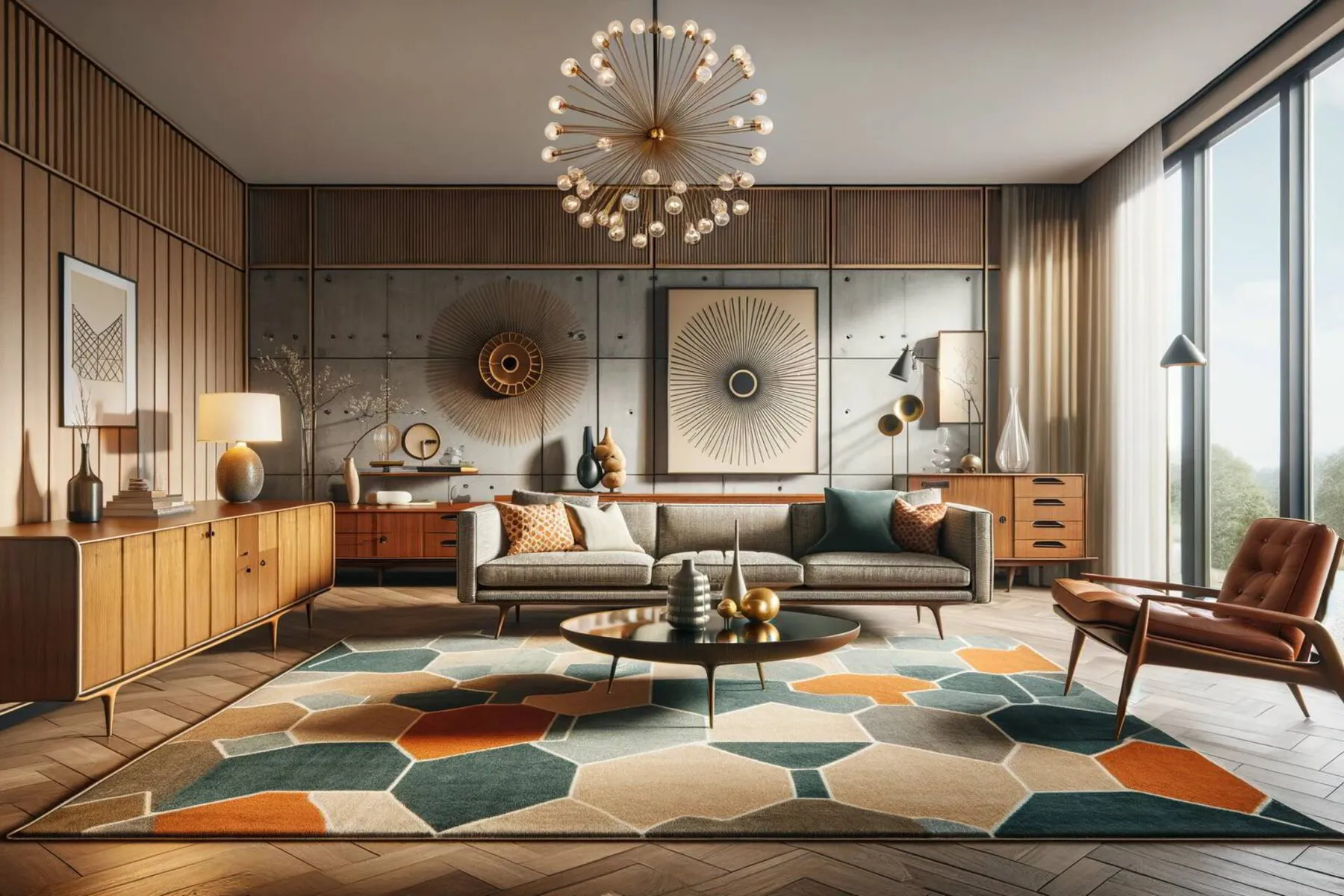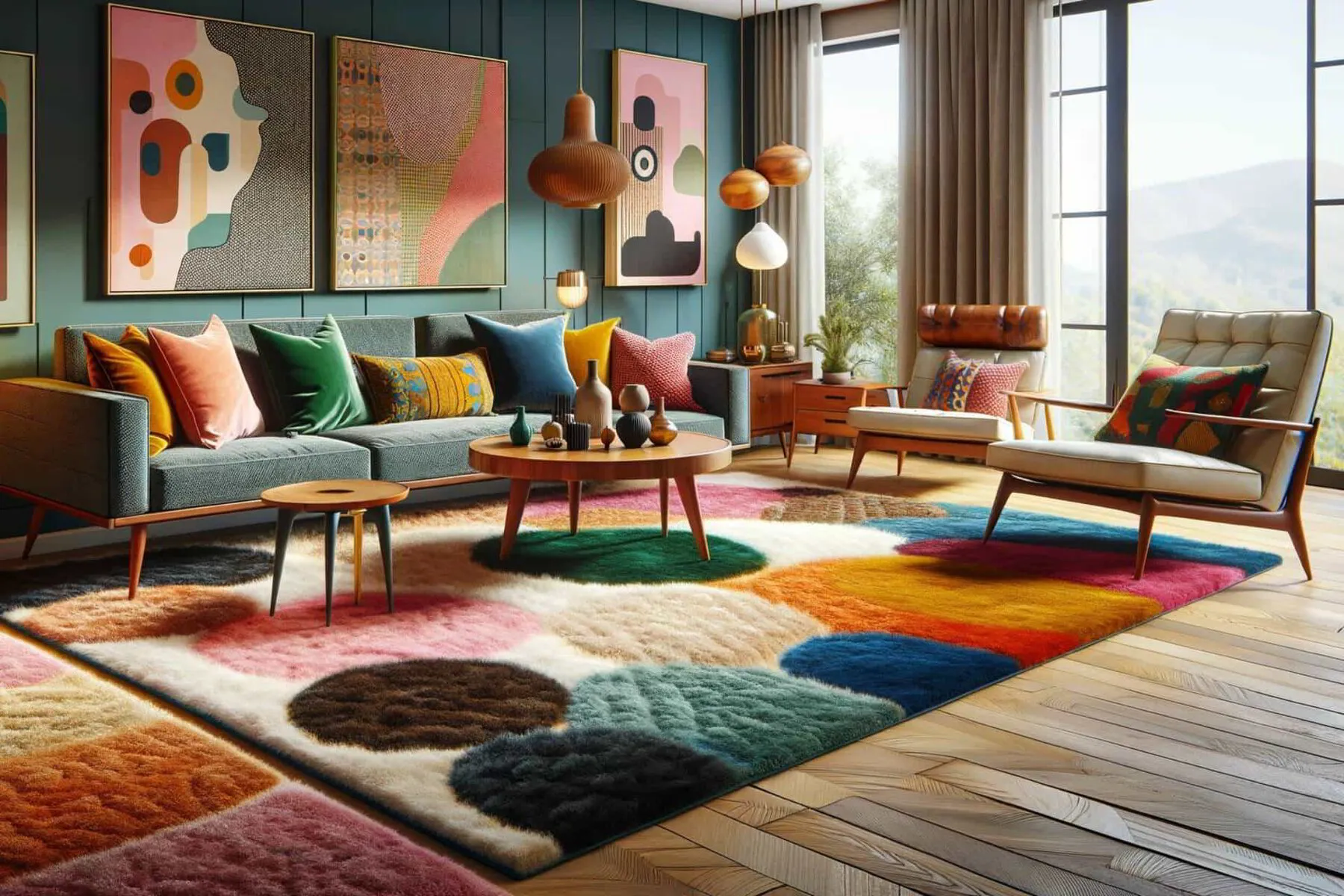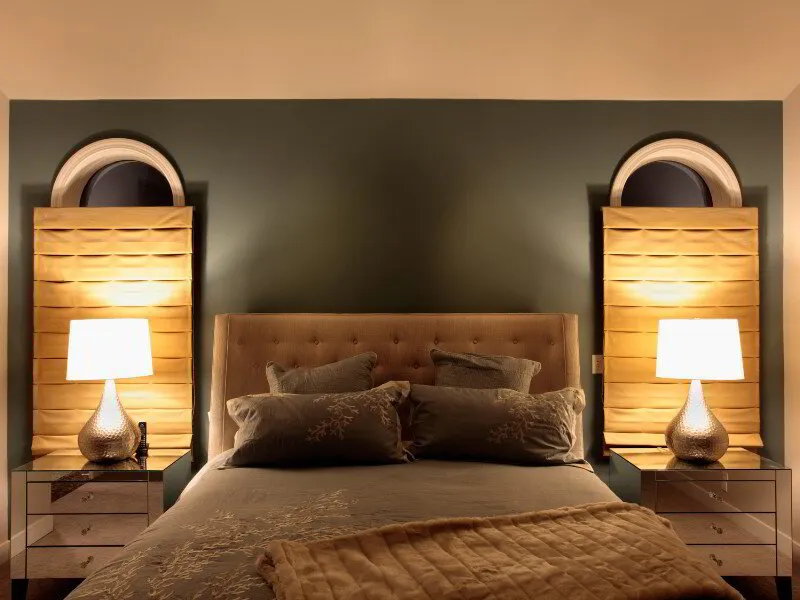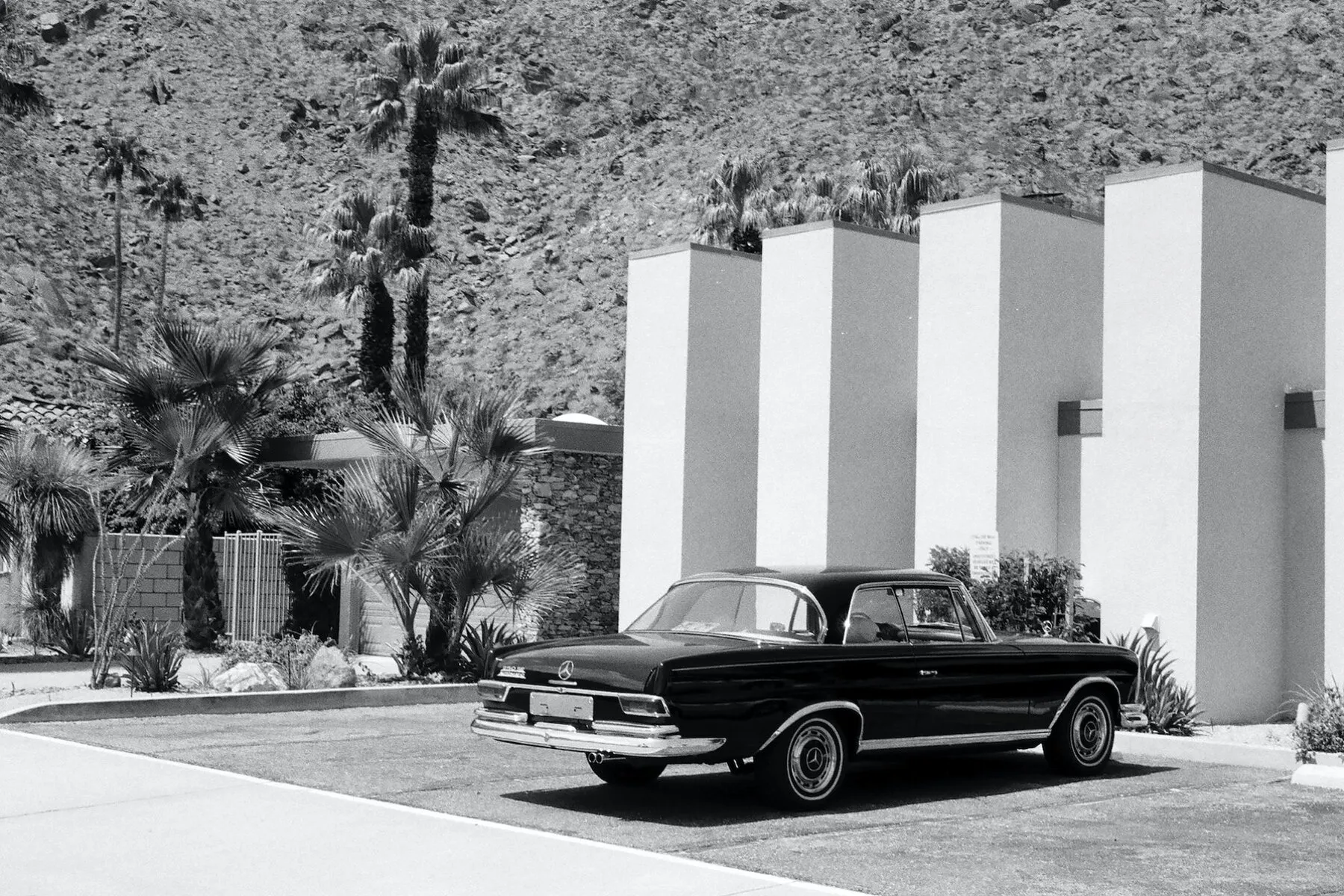Have you ever wondered why mid-century modern decor continues to capture our hearts decades after its inception in the post-World War II era?
This design style, renowned for its seamless blend of simplicity and bold expression, has transcended time, influencing not just furniture but the very essence of architecture and interior design.
In this guide, we'll embark on a journey through the key elements of mid-century modern decor, from its iconic furniture pieces like the Eames chair to its enduring impact on contemporary living spaces.
My personal tryst with this style began with a single vintage piece, igniting a passion for its timeless elegance and functionality. Join me as we explore how to integrate this classic yet modern aesthetic into our homes, ensuring a blend of retro charm and current trends.
Let's rediscover the allure of mid-century modern decor together, transforming our living spaces into a testament to this enduring design style.
📘 Key Takeaways
- Elegant Minimalism: Mid-century modern decor, originating from the post-WWII era, is renowned for its minimalist approach, characterized by clean lines, warm wood tones, and vibrant colors.
- Iconic Furniture and Legacy: Showcasing timeless pieces like the Eames chair and Saarinen tulip table, this style pays tribute to legendary designers, emphasizing its historical significance and lasting appeal.
- Fusion of Eras: The style excels in blending vintage charm with contemporary elements, creating a unique, cohesive look that bridges different design eras.
- Lighting as a Design Element: Emphasizing the importance of lighting, mid-century modern decor uses it to enhance both functionality and style, with a focus on simplicity and elegance.
- Versatile and Practical Design: The versatility of mid-century modern decor makes it adaptable to various interiors, with practical guidance provided for integrating this style into modern living spaces.
Understanding Mid-Century Modern Design
The genesis of mid-century modern design can be traced back to the late 1940s, a time when the world was emerging from the shadows of war and stepping into an age of reconstruction and renewal.
Inspired by the changing times, designers began to explore new materials and techniques, leading to a radical transformation in interior and furniture design.
This style, often intertwined with the minimalist aesthetics of Scandinavian design, as exemplified by Arne Jacobsen, and the pragmatic approach of American design formed a unique blend that emphasizes functionality without compromising on beauty.
Key Characteristics of Mid-Century Modern Decor
Mid-century modern design is characterized by a clean, uncluttered look, focusing on simplicity and minimalism. It's a style where form and function are in perfect harmony, resulting in designs that are as practical as they are aesthetically pleasing.
Furniture pieces are typically sleek, with clean lines and organic curves, without unnecessary ornamentation. Iconic pieces like the Eames Lounge Chair and George Nelson's platform bench exemplify this design philosophy.
Cultural and Historical Significance
More than just a design trend, mid-century modernism was a reflection of the cultural shift of its time. The postwar era, marked by newfound optimism and a collective desire for progress, was encapsulated in the mid-century design philosophy.
This era saw the introduction of innovative materials in furniture design, symbolizing hope and the forward-looking spirit of the era. Designers like Charles and Ray Eames utilized these new materials to create groundbreaking designs that reflected the era's ethos.
Innovation in Materials and Techniques
The hallmark of mid-century modern design was its innovative use of materials. Designers embraced the potential of new materials like fiberglass, molded plywood, and plastic, which enabled them to experiment with bold new forms, vibrant colors, and fluid lines.
This innovation was not just a stylistic choice but a practical one, as these materials offered durability and ease of maintenance, aligning perfectly with the style’s emphasis on functionality. The work of Arne Jacobsen, particularly his Egg Chair, stands as a testament to this innovative spirit.
Styling Your Space with Mid-Century Modern Elements: A Step-by-Step Guide
Step 1: Assess Your Space
Before diving into the world of mid-century modern decor, the first crucial step is to assess your space. Understanding your room's dimensions, layout, and natural characteristics is key to effectively incorporating mid-century elements. Let's start by evaluating your space to set the stage for a stunning transformation.
Understanding Room Dimensions
Begin by measuring the dimensions of your room. Note the length, width, and height, as these measurements will guide your furniture choices.
Mid-century furniture often features clean lines and a sleek profile, so choosing pieces that fit comfortably in your space without overcrowding is essential.
Analyzing Room Layout
Examine the layout of your room. Where are the doors and windows located? How does foot traffic flow through the space?
Mid-century modern design values functionality, so consider how each piece of furniture will be used and ensure it complements the room's flow. For instance, a central coffee table should be easily accessible yet not obstruct movement.
📘 Related Reading: The Benefits of Good Space Planning in Interior Design
Considering Natural Light
Observe the natural light in your room. Mid-century modern decor thrives in well-lit spaces, accentuating its clean lines and organic forms.
Identify which areas receive ample sunlight and plan to place key pieces, like a reading chair or a work desk, in these well-lit spots. If natural light is limited, consider how to enhance it with strategically placed mirrors or additional lighting fixtures.
Assessing Existing Color Schemes
Take note of the existing color palette in your room. Mid-century modern design often incorporates a mix of neutral tones and bold colors.
If your room already has a dominant color scheme, consider how mid-century modern pieces can complement or accentuate these hues. For example, a room with neutral walls could be enlivened with a vibrant mid-century modern armchair or rug.
Room Functionality and Purpose
Finally, reflect on the primary function of your space. Is it a living area, a home office, or a multi-purpose room? The functionality will influence your decor choices.
For instance, a mid-century modern sofa paired with a functional coffee table can create a stylish yet practical setting in a living room.
By thoroughly assessing your space, you lay the groundwork for a successful mid-century modern makeover. This initial step ensures that your decor choices not only embody the aesthetic beauty of mid-century design but also cater to the practical needs of your living space.
With these considerations in mind, you're now ready to move on to the next step of selecting your statement pieces.
Step 2: Choose Your Statement Pieces
Having assessed your space, the next step in embracing mid-century modern decor is selecting statement pieces that define the room's character.
Mid-century modern design is renowned for its iconic furniture, which combines functionality with artistic flair. Let's explore how to choose pieces that complement your space and make a definitive style statement.
Identifying Key Furniture Pieces
Start by identifying which key furniture pieces you need. In mid-century modern design, each piece often serves as a focal point.
Consider an Eames Lounge Chair for its timeless elegance or a George Nelson-inspired platform bench for both seating and visual interest. These pieces are not just furniture but conversation starters and works of art.
Balancing Functionality and Style
When selecting your statement pieces, balance functionality with style. A sleek, functional Saarinen tulip table can serve as a dining table while epitomizing the mid-century modern aesthetic.
Similarly, with its unique sculptural form, a Noguchi coffee table can be both a centerpiece and a functional element of your living room.
Considering Scale and Proportion
Considering the scale and proportion of your chosen pieces relative to your space is crucial. Mid-century furniture is known for its clean lines and appropriate scaling.
Ensure that the furniture you select fits comfortably in your room without overwhelming it. For example, a compact, stylish Jacobsen Egg Chair can be perfect for a smaller room.
Incorporating Authentic or Inspired Pieces
Decide whether to go for authentic mid-century pieces or modern reproductions. In contrast, often more expensive, authentic pieces bring a sense of history and uniqueness.
Reproductions, however, are more accessible and can still capture the essence of mid-century design. Whichever route you choose, ensure the pieces align with the mid-century modern principles of simplicity and elegance.
Adding Personal Touches
Finally, personalize your space with your chosen statement pieces. Whether it's a vibrant Eames RAR Rocker in a corner or a sleek, modular George Nelson Bubble Lamp, these pieces should reflect your personal style and complement the overall design theme of your room.
With your statement pieces selected, you've laid the foundation for a mid-century modern aesthetic in your home. These pieces are not just functional items but are emblematic of a design era known for its innovation and style.
As we move to the next step, remember that each piece you've chosen reflects the mid-century modern ethos and your personal taste.
Step 3: Balance with Contemporary Elements
Having selected your statement pieces, the next step is to harmonize these mid-century modern elements with contemporary design touches. This fusion creates a dynamic, timeless interior that respects the past while embracing the present. Let’s explore how to strike this delicate balance in your home.
Integrating Modern Textiles and Fabrics
Begin by integrating modern textiles and fabrics into your space. Consider contemporary rugs, throw pillows, or curtains that complement the vintage hues of your mid-century pieces. For instance, a geometric-patterned rug can add a modern twist to a room with a classic Eames chair.
Contemporary Color Schemes
Mid-century modern design often features bold colors. Balance these with contemporary color schemes that add freshness and vibrancy to your space.
Neutral walls can serve as a backdrop to highlight the bold colors of mid-century furniture, or you can opt for a modern monochromatic scheme to let the classic silhouettes stand out.
Modern Lighting and Fixtures
Lighting is a key element in any interior design. Complement your mid-century furniture with contemporary lighting fixtures. Sleek, modern floor lamps or pendant lights can contrast the vintage furniture, adding layers and depth to your room’s aesthetic.
Blending Decorative Elements
Decorative elements are the finishing touches that can tie a room together. Mix mid-century accessories like sunburst clocks or starburst mirrors with contemporary art pieces or vases. This blend of old and new creates a curated look that feels both nostalgic and forward-thinking.
Modern Functional Additions
Don’t forget functionality in your design. Incorporate contemporary elements that offer modern convenience, such as smart home devices or minimalist storage solutions. These additions ensure your space is stylish and fully functional in today’s world.
With these contemporary elements in place, your space now reflects a harmonious blend of mid-century charm and modern sophistication.
This balance is key to creating a living space that is both a nod to the past and a step toward the future. As we move to the next step, remember that the goal is to create a cohesive, comfortable, and personalized environment.
Step 4: Incorporate Authentic Accessories
After establishing a foundation with your statement pieces and balancing them with contemporary elements, the next step is to enhance your space with authentic mid-century modern accessories.
These smaller details can significantly elevate the overall aesthetic, adding layers of authenticity and character to your home.
Selecting Iconic Mid-Century Accessories
Begin by selecting accessories that are iconic to the mid-century modern era. Look for sunburst clocks, starburst mirrors, or sculptural vases embodying the period's design ethos. These pieces serve as decorative elements and as nods to the rich history of mid-century modern design.
Incorporating Artwork and Wall Decor
Artwork and wall decor are pivotal in bringing a room's design together. Opt for mid-century modern art pieces, often featuring abstract patterns, bold colors, and geometric shapes.
Hang a piece of abstract expressionist art or a minimalist print to add a touch of sophistication and historical relevance to your space.
Selecting Artwork and Decorative Objects
Finally, don't forget to add some artwork and decorative objects to your midcentury design home. Look for classic pieces that reflect the simplicity and beauty of the mid-century modern aesthetic, from abstract paintings to sculptural objects.
Choose between large pieces and items that add personality and flair to your space, while still maintaining a cohesive overall look.
Textiles and Upholstery
Textiles and upholstery play a significant role in achieving an authentic mid-century look. Consider adding throw pillows or reupholstering a chair with fabrics that reflect mid-century patterns and colors, such as bold geometrics or muted pastels. These textiles can bring warmth and depth to your space.
Functional Yet Stylish Items
Mid-century modern design is known for its functionality. Incorporate items like vintage clocks, retro radios, or mid-century-styled planters that are aesthetically pleasing and serve a purpose. These functional yet stylish items enhance the authenticity of your mid-century modern decor.
Mixing Vintage and Reproduction
While authentic vintage accessories add a layer of genuineness, don't shy away from quality reproductions.
They can be more accessible and affordable, allowing you to achieve the mid-century modern look without the hunt for rare items. The key is to mix these with your vintage finds for a balanced and cohesive look.
With these authentic accessories in place, your space now truly captures the essence of mid-century modern design. Though small in scale, these elements play a crucial role in bringing the style's history and character to life in your home.
As we move forward, remember that each accessory you choose is a piece of history that adds to your space's unique story.
Step 5: Play with Colors and Textures
Having laid the groundwork with furniture and accessories, the next step is to infuse life into your mid-century modern space through the playful use of colors and textures.
This step is crucial in creating a visually dynamic and cohesive environment that reflects the essence of mid-century modern design.
Choosing a Color Palette
Mid-century modern design is renowned for its unique color palettes, which often include a mix of both neutral and bold hues. Start by selecting a base color for your walls and large furniture pieces – think muted tones like beige, gray, or white.
Then, introduce pops of vibrant colors like mustard yellow, teal, or burnt orange through accent pieces, such as throw pillows, artwork, or decorative objects. This approach creates a balanced yet lively space.
📘 Related Reading: How To Use Color Theory For Interior Design
Incorporating Wood Tones
Wood is a quintessential element in mid-century modern design. Incorporate various wood tones to add warmth and depth to your space.
From the rich walnut of a classic sideboard to the lighter oak of a Scandinavian-inspired coffee table, mixing different wood finishes can create an inviting and layered look.
Experimenting with Textures
Texture plays a significant role in mid-century modern interiors. Combine smooth and sleek surfaces, like a glass coffee table or a polished metal lamp, with textured fabrics such as tweed upholstery or a shag rug.
This contrast in textures adds interest and complexity to your space, making it more engaging and comfortable.
📘 Related Reading: How to Use Texture in Interior Design for Maximum Impact
Adding Geometric and Organic Patterns
Mid-century modern design often features geometric and organic patterns. Incorporate these through area rugs, curtains, or wallpaper. Patterns like herringbone, chevron, or abstract organic shapes can complement the furniture's clean lines, adding a touch of retro flair to your decor.
📘 Related Reading: The Impact of Pattern In Interior Design
Balancing Matte and Shine
Balance matte and shiny finishes to create a visually appealing space. Pair matte wall paint or a flat-finish sideboard with glossy ceramics or metallic accents. This interplay of finishes can enhance the overall aesthetic appeal of your mid-century modern decor.
With thoughtfully selected colors and textures, your mid-century modern space now exudes a harmonious and inviting atmosphere.
These elements, crucial in defining the room's character, bring together the various components of your decor, resulting in a cohesive and stylish interior.
Step 6: Finalize with Lighting
As we approach the final step in creating your mid-century modern space, it's time to focus on one of the most influential aspects of interior design: lighting. The right lighting illuminates your space and highlights the beauty of your mid-century modern decor, enhancing the overall ambiance.
📘 Related Reading: The Magic of Interior Lighting Design: A Complete Guide
Choosing Mid-Century Modern Lighting Fixtures
Begin by selecting lighting fixtures that reflect mid-century modern aesthetics.
Look for pieces with clean lines and geometric shapes. Iconic designs, such as the Sputnik chandelier or Arco floor lamp, can serve as statement pieces while providing functional lighting. These fixtures brighten your space and serve as artful accents that complement your decor.
Layering Different Light Sources
Effective lighting involves layering different types of light sources. Combine ambient lighting, like ceiling fixtures, with task lighting like table lamps or wall sconces.
This approach ensures that your space is well-lit for various activities while maintaining the mid-century modern vibe. For instance, a sleek tripod floor lamp beside a reading chair adds style and functionality.
Incorporating Accent Lighting
Don’t forget accent lighting, which can be used to highlight architectural features or artwork. Use directional track lighting or discreet spotlights to draw attention to specific elements in your room, like a gallery wall of mid-century art or a beautifully crafted piece of furniture.
Balancing Warm and Cool Lighting
Balance warm and cool lighting to create a comfortable ambiance. Mid-century modern design often favors warmer tones, which can be achieved with bulbs that emit a soft, warm glow.
However, incorporating some cooler tones in task lighting areas can provide a more balanced and visually comfortable environment.
Embracing Natural Light
Finally, make the most of natural light. The mid-century modern design emphasizes a connection with nature, so allow as much natural light as possible to enter your space. Use sheer curtains or unadorned windows to maximize daylight, complementing your artificial lighting setup.
With your thoughtfully selected and strategically placed lighting, your mid-century modern space now shines in full glory.
The lighting serves its functional purpose and enhances the aesthetic appeal of your decor, setting the perfect mood for your stylish and timeless interior.
Final Thoughts
By following these tips and using mid-century design as your inspiration, you can create a home decor scheme that is both stylish and timeless.
Whether you're looking to add a few vintage pieces to your collection or completely revamp your space, mid-century modern design is a great way to bring a touch of retro charm into your home.
And if you want to learn more about interior design and its exciting possibilities, don't forget to check out the rest of our interior design blog!
Thanks for reading!
📘 Related Reading: Peeking Into The Past: Unraveling The History Of Interior Design
Lara Harding
Lara is a supporting author @ DIY Home Comfort. She's an experienced interior designer and decorator and a full-time mom. You can find out more about her here.
